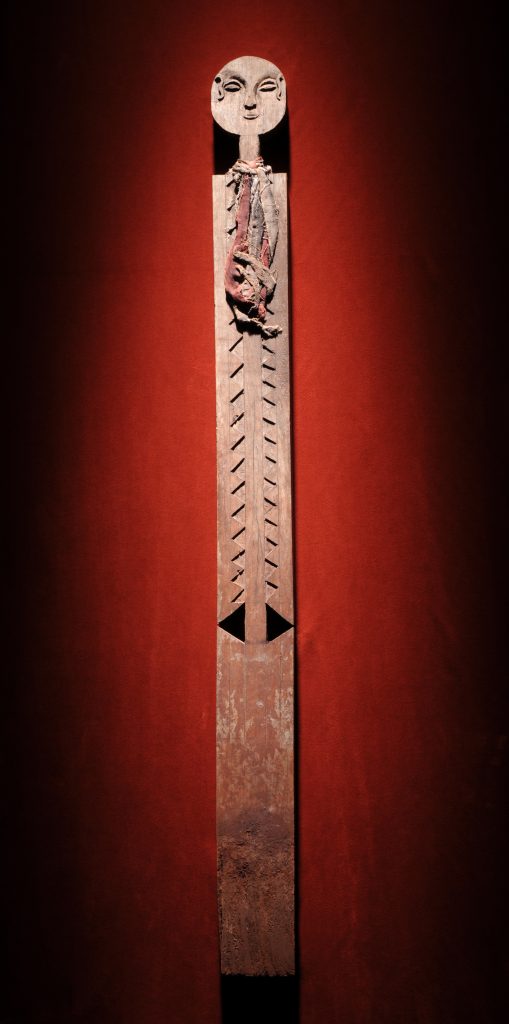The Right to Own Living Memorials
Are you an organ donor? Have you donated your body to science? Have you donated a loved one’s body to science? If you answer yes to any of these questions, you have provided informed consent to do so.
Informed consent is based on the moral and legal premise of individual autonomy, in which you or your relatives enjoy the right to make decisions about your body and the disposition thereof. Informed consent with respect to human remains is well-established and codified in Western law and ethics, and it points to the deference and sanctity with which many cultures treat the deceased.
Graves and cemeteries are often seen as sacred, and we reserve special disdain for people who violate these places. (In cross-cultural and archaeological terms, there are many notable exceptions, such as when graves or tombs are ritually re-entered and human remains are used ceremonially. Such events are usually considered sacred acts and are thus exceptions that prove the rule.)
Many human societies create markers, shrines, and tombs to mark or contain the deceased; these artifacts and features are often considered sacred as well. Some cultures go further, creating objects that they believe are the actual, physical embodiment of the deceased. Such is the case with the Mijikenda on the eastern coast of Kenya and Tanzania.
In the face of fast-encroaching world religions, particularly Islam and Christianity, the Mijikenda continue to engage in traditional religious practices. They worship ancestral spirits and believe those spirits have strong influential powers over their lives. Some Mijikenda groups worship their ancestors through the construction of memorial statues called vigango (singular: kikango). Carved out of local, termite-resistant hardwoods, vigango take the form of decorated and abstract human males with long, rectangular bodies and circular heads. These statues are communally held memorials erected on (or near) the graves of notable men in the community.
The Mijikenda believe that vigango bring luck and prosperity to the whole community, particularly to the family of the man being honored, and that once erected vigango should not be moved or molested, for fear that their power will be diluted, if not completely violated.
The Mijikenda also believe that vigango are living objects—that they are material manifestations of the souls of departed and honored elders. As such, vigango are not analogous to grave markers in the Western tradition, because grave markers are not physical incarnations of the dead.
In the early 1980s, American art dealers seeking to grow their businesses “discovered” vigango. They began to sell them as art objects, ignoring their living, protective value to the Mijikenda. Unemployed young Mijikenda and other men in Kenya and Tanzania were hired by art dealers to steal sacred vigango, selling them to middlemen for as little as $7 each. Once vigango reached the art market in Mombasa or Nairobi, they often fetched a price of several hundred dollars. When art dealerships in the United States obtained them, they typically sold for a few thousand dollars each. Today, prices of up to $15,000 for a single kikango are common at auction houses in the United States. Who profits? Not the men who perpetrated the theft or the source community that suffered the loss. Profits accrue up the chain of possession.
By the late 1980s, stolen vigango began to be donated to unsuspecting museums throughout the United States. In a self-reinforcing feedback loop, museums benefitted from the addition of beautiful objects to their collections, donors enjoyed enhanced social prestige and tax deductions, and art dealers profited handsomely from a newly created market. Today, at least 400 vigango are held in at least 21 museums and private collections in the United States. Mijikenda elders recount the cause-and-effect relationship between vigango theft and recent economic, social, environmental, and even health troubles affecting their people.
The sale of vigango is not technically illegal because laws prohibiting their sale and transfer do not exist in Kenya. Furthermore, Kenya has not ratified the 1970 UNESCO Convention on the Means of Prohibiting and Preventing the Illicit Import, Export, and Transfer of Ownership of Cultural Property, under which individuals and institutions in the United States could be legally compelled to return vigango. Legality aside, though, every vigango sale and donation is underlain by a series of ethical blunders and spiritual affronts, the full effects of which are still being assessed by community leaders and anthropologists, if not art dealers or consumers.
Every vigango sale and donation is underlain by a series of ethical blunders and spiritual affronts.
From a Western perspective, vigango should be considered inalienable possessions or objects of cultural patrimony, and therefore items that belong to entire communities. Seen in this light, the primary breach of ethics (if not law) under consideration is the original theft of vigango in and from their source communities. The sale and donation of vigango thereafter, whether by a thief, a dealer, or a collector, should be considered null and void because those individuals did not have the right to own, much less sell or donate, the objects in question. By extension, museums that have vigango in their collections do not have good title to them.
If we acknowledge and respect the Mijikenda’s right to cultural self-determination and autonomy, and the fact that they believe vigango are the physical embodiment of their ancestors, shouldn’t informed consent be the threshold by which we evaluate the right to possess vigango? Shouldn’t we acknowledge, under the Mijikenda worldview, that to buy and sell vigango is equivalent to buying and selling human remains, a universally condemned activity in the absence of informed consent? If this is indeed the case, all vigango in museums and private collections should be repatriated to the Mijikenda as soon as possible.

































